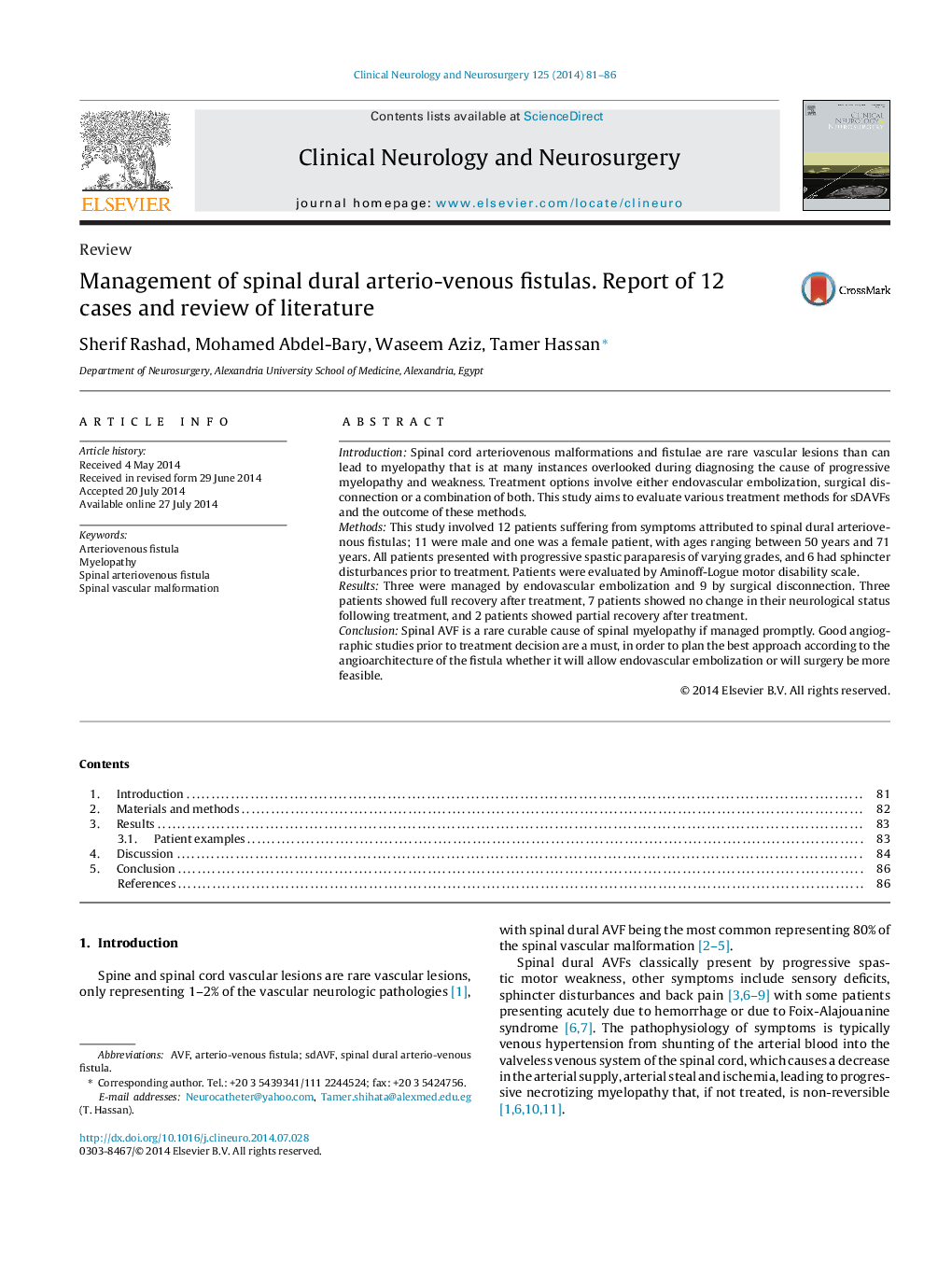| Article ID | Journal | Published Year | Pages | File Type |
|---|---|---|---|---|
| 3040197 | Clinical Neurology and Neurosurgery | 2014 | 6 Pages |
•We present our experience in the diagnosis and treatment of 12 spinal dural fistula cases.•Literature review of the diagnosis, radiology, treatment and outcome of spinal dural fistula.•We compared our results of treatment with those reported in the literature.
IntroductionSpinal cord arteriovenous malformations and fistulae are rare vascular lesions than can lead to myelopathy that is at many instances overlooked during diagnosing the cause of progressive myelopathy and weakness. Treatment options involve either endovascular embolization, surgical disconnection or a combination of both. This study aims to evaluate various treatment methods for sDAVFs and the outcome of these methods.MethodsThis study involved 12 patients suffering from symptoms attributed to spinal dural arteriovenous fistulas; 11 were male and one was a female patient, with ages ranging between 50 years and 71 years. All patients presented with progressive spastic paraparesis of varying grades, and 6 had sphincter disturbances prior to treatment. Patients were evaluated by Aminoff-Logue motor disability scale.ResultsThree were managed by endovascular embolization and 9 by surgical disconnection. Three patients showed full recovery after treatment, 7 patients showed no change in their neurological status following treatment, and 2 patients showed partial recovery after treatment.ConclusionSpinal AVF is a rare curable cause of spinal myelopathy if managed promptly. Good angiographic studies prior to treatment decision are a must, in order to plan the best approach according to the angioarchitecture of the fistula whether it will allow endovascular embolization or will surgery be more feasible.
